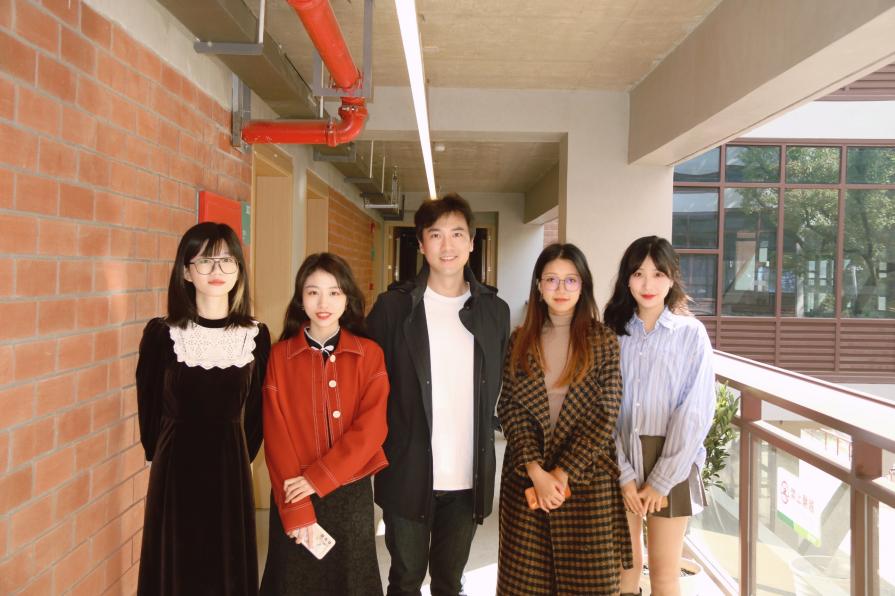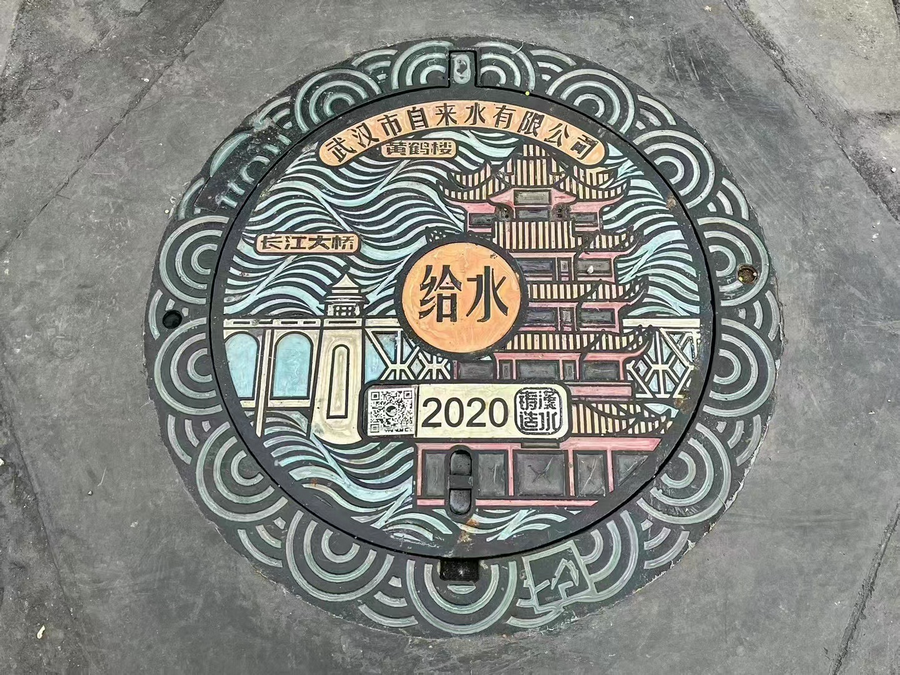Recently, the Wuhan Cultural and Creative Manhole Cover System (WCCMCS) for Wuhan Water Group was selected as a featured case in UNESCO’s Creative Cities Network. This system was designed by Professor Deng Jun’s team from the School of Urban Design (SUD) , Wuhan University (WHU). Huangxi Xieli, Liu Weisen, Long Qianqian, and Xu Yuan, four junior students of SUD, are the main designers in the project team who tried for the first time to participate in a commercial design project.

Huangxi, Liu, Professor Deng, Long and Xu (from left to right)
The WCCMCS uses manhole covers to present Wuhan’s landscape, including “Urban Landmarks”, “Red Marks”, “Key Safeguard”, “Value-added Services” and “Cultural and Creative Surroundings”. Professor Deng Jun, head of the Department of Design at SUD, said, “We try to design a systematic story through the manhole covers, and comprehensively tell tourists and local people about Wuhan’s history, politics, economy, and culture. We hope this could become Wuhan’s city badge and contribute to the development of society through the lens of design.”
Liu Weisen, in charge of the “Value-added Services” category, said that manhole covers are ordinary in our daily life, but by making them beautiful and meaningful, they can tell a city’s story in a diverse and surprising way, which is one of the core reasons why our work impresses the public.”

Manhole covers of the “City Badge of Han River” series
It is notable that the main designers joined the project when they had just finished their sophomore year. Prof. Deng shared his insight that the teaching of design should be multi-dimensional, including classroom teaching, science and innovation education, and service to the campus. The project where he led the four students belongs to science and innovation education, through which the students’ outstanding and professional ability has been proven.
When talking about being invited by Prof. Deng to join the team, the four girls were still overflowing with surprise and jokingly said they were flattered. “In our sophomore year, we took Prof. Deng’s Cultural and Creative Product Design course, communicated with and learned a lot from him, and finally completed the design of a set of WHU’s cultural and creative works. I think that’s an obvious reason why we were chosen,” one of the students said.
However, the four designers did face some challenges once involved in the project. The first and biggest difficulty was that none of the team was in Wuhan, so they were unable to travel to the field to conduct research. Searching for information via the Internet was also inconvenient. Secondly, it was a challenging job to combine cultural connotations, patterns, manhole cover regulations, and corporate needs with aesthetic awareness. At the same time, what concerned Huangxi most was how to meet the requirements of the company for lack of commercial practice experience. “It is a process that constantly requires adjustment. Design is a balance of function and art, so we should always be thinking about how to find the balance,” Long Qianqian said.
With these challenges in mind, the team conducted numerous interviews and field research to understand the connotations of the stories behind each landmark. Xu was the student responsible for the design of the “Key Safeguard” category, and she said, “When I was drawing the manhole cover of Tongji Hospital, I consulted the hospital’s extensive history and discovered the shocking experiences of the medical team during the COVID-19 in 2020. I was amazed at the strength and charm of the hospital.” While creating one manhole of the Yellow Crane Tower and the Yangtze River Bridge, Long made the past meet the present, bringing an overwhelming impression for visitors on how Wuhan steps forward with its history. Day by day, these girls all gained their own unique inspirations in designing and exploring.

Through this practice, all four girls confessed that they gained a lot. “This project has given me a deeper understanding of Wuhan, and I am very honored to be able to introduce it to the world through the power of design.” “Studying at Wuhan University is a pleasant experience, and thanks to the broad vision and professional competence the university has given us, I feel honored to have been given the opportunity to take part in this project,” these girls unanimously said.
Led by Prof. Deng, the four young girls’ work achieved unexpectedly good results. After the launch of the manhole covers, the beautiful and creative works received media coverage from all over the country, and countless citizens and visitors went to the sites to take photos and share them on social media. Being selected as a featured case in the UNESCO-Creative Cities Network, the tiny manhole cover designs were seen around the globe and would tell the fascinating story of Wuhan to people abroad.
Photo by Huangxi Xieli
Edited by Fu Wantong, Chen Jiaqi, Li Jing, Cheng Shiwen, Zhang Yilin, Sylvia, Xi Bingqing